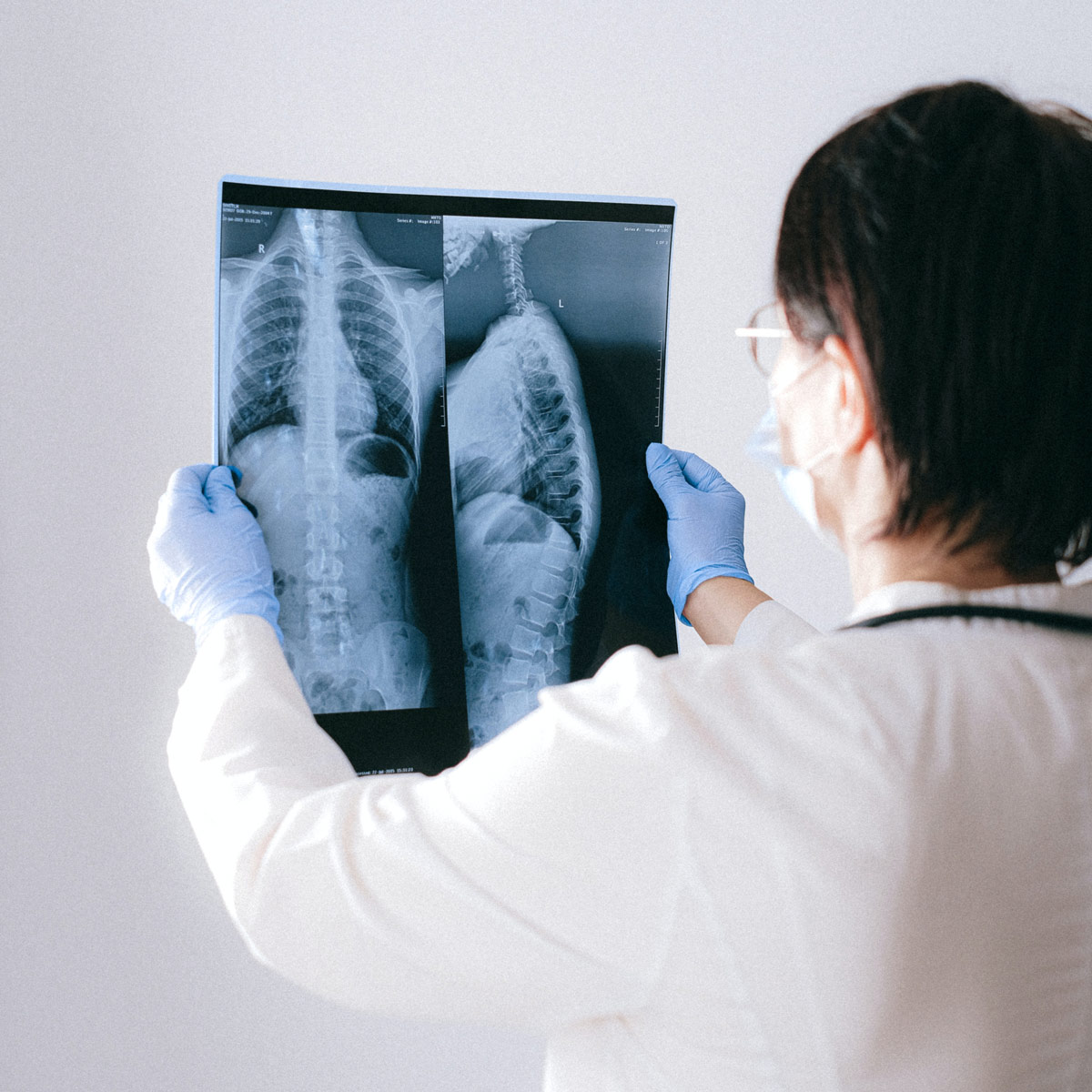Emergencies
Following your doctor’s recommendations for medication, monitoring, and physical activity gives you the best chance of avoiding a serious complication of Marfan syndrome. Still, there are no guarantees. That’s why it’s important for you to learn about the medical problems that could arise and require immediate medical treatment.
-
Step 1 Cardiac Emergencies
Cardiac Emergencies
Know the Signs of an Aortic Aneurysm and Dissection
People with Marfan syndrome are at up to 250 times greater risk of aortic dissection (a tear or rupture between layers of the aortic wall) than the general population. That’s why it’s important to know the signs of an aortic dissection and what to do.
Symptoms of aortic aneurysm may be related to the location, size and growth rate of the aneurysm and can include:
- Pain in the chest, neck, and/or back
- Swelling of the head, neck, and arms
- Coughing, wheezing, or shortness of breath
- Coughing up blood
Symptoms of aortic dissection usually appear suddenly and may include:
- Severed, sudden, constant chest pain and/or upper back pain, sometimes described as “ripping” or “tearing”
- Pain that feels like it is moving from one place to another
- Unusually pale skin
- Faint pulse
- Numbness or tingling
- Paralysis
- In some instances, there may be no pain but a sense that there is something terribly “wrong.”
If a dissection is suspected, a person needs immediate medical attention and should go to a hospital emergency department right away.
What you can do: Unless someone has a known diagnosis of Marfan syndrome or very obvious physical characteristics that would indicate Marfan syndrome or a related condition, reports of chest pain often do not automatically raise the possibility of aortic dissection in the emergency room.
Therefore, be sure that you are prepared to:
- Advocate for yourself by telling emergency department staff that you have Marfan syndrome or a related condition in order to appropriate scans for dissection quickly.
- Communicate effectively with doctors and nurses in the emergency department.

-
Step 2 Eye Emergencies
Eye Emergencies
Marfan syndrome and some related disorders can affect the eyes in many ways, causing dislocated lenses and other eye problems that can affect your sight. Except for dislocated lenses, these eye problems also occur in the general population, which is why doctors do not always realize they are caused by Marfan syndrome. It is important to know that, even though these problems occur in the general population, they are much more common in people who have Marfan syndrome.
Marfan syndrome significantly increases your risk of retinal detachment, a serious condition that should be treated as an emergency. Retinal detachment is a separation of the light-sensitive membrane in the back of the eye (the retina) from its supporting layers.
It is important to receive immediate evaluation and care of a retinal detachment because the longer you wait for treatment, the greater the chance that the retinal detachment will become more severe. The more severe the detachment, the less vision may return. Any surgery has its risks; however, an untreated retinal detachment usually results in permanent, severe vision loss or blindness.
Symptoms of retinal detachment
Early symptoms that may indicate a retinal detachment are:
- Bright flashes of light, especially in peripheral vision
- Translucent specks of various shapes (floaters) in the eye
- Blurred vision
- Shadow or blindness in a part of the visual field of one eye
- What you can do
As in any emergency, it is best to be prepared in advance. Keep your medical history, such as medical and personal contact information, legal documentation, and allergies, handy to take with you to the hospital.

-
Step 3 Lung Emergencies
Lung Emergencies
People with Marfan syndrome can be at increased risk of sudden lung collapse (spontaneous pneumothorax). Sudden lung collapse is a collection of air or gas in the space between the lungs and the chest that “collapses” the lung and prevents it from inflating completely. While this condition is usually not life-threatening, it should be considered an emergency.
Symptoms of sudden lung collapse (pneumothorax): Symptoms of a sudden lung collapse include chest pain that usually starts very suddenly. The pain is sharp and may lead to the feeling of tightness in the chest. Shortness of breath, rapid heart rate, rapid breathing, cough, and fatigue are other symptoms of pneumothorax. The skin may develop a bluish color (called cyanosis) due to decreases in blood oxygen levels.
What you can do: People with Marfan syndrome who require treatment for pneumothorax should tell the surgeons that they have Marfan syndrome and may need aortic surgery in the future. This will enable the surgeons to make the best treatment recommendation.
Describe the pain completely
Be prepared to answer the following questions. If your doctor does not ask, speak up and tell him/her anyway. Be prepared to answer:
- Where is the pain located?
- How severe is the pain?
- When did it start?
- What does the pain feel like?
- Does the pain radiate (move) to other areas of the body (for example, the back, neck or arms)?
- Is this kind of pain like anything you have ever felt before?
- Tell the surgeons that you have Marfan syndrome and may need aortic surgery in the future.
This will enable the surgeons to make the best treatment recommendation among options that may include supplemental oxygen, chest tube insertion or pleurodesis, which involves scarring the lung surface to attach the lung to the chest wall. The best pleurodesis method for people with Marfan syndrome is mechanical rather than chemical pleurodesis, as the former makes cardiac surgery easier.

Cardiac Emergencies
Know the Signs of an Aortic Aneurysm and Dissection
People with Marfan syndrome are at up to 250 times greater risk of aortic dissection (a tear or rupture between layers of the aortic wall) than the general population. That’s why it’s important to know the signs of an aortic dissection and what to do.
Symptoms of aortic aneurysm may be related to the location, size and growth rate of the aneurysm and can include:
- Pain in the chest, neck, and/or back
- Swelling of the head, neck, and arms
- Coughing, wheezing, or shortness of breath
- Coughing up blood
Symptoms of aortic dissection usually appear suddenly and may include:
- Severed, sudden, constant chest pain and/or upper back pain, sometimes described as “ripping” or “tearing”
- Pain that feels like it is moving from one place to another
- Unusually pale skin
- Faint pulse
- Numbness or tingling
- Paralysis
- In some instances, there may be no pain but a sense that there is something terribly “wrong.”
If a dissection is suspected, a person needs immediate medical attention and should go to a hospital emergency department right away.
What you can do: Unless someone has a known diagnosis of Marfan syndrome or very obvious physical characteristics that would indicate Marfan syndrome or a related condition, reports of chest pain often do not automatically raise the possibility of aortic dissection in the emergency room.
Therefore, be sure that you are prepared to:
- Advocate for yourself by telling emergency department staff that you have Marfan syndrome or a related condition in order to appropriate scans for dissection quickly.
- Communicate effectively with doctors and nurses in the emergency department.

-
Carolyn Fisher – My Marfan Story
“You are so lazy! Why don’t you get a life!” These words I heard belching from my mouth at my son. Ignorance can call you to say things you might regret. I’ve spent 3 decades in sports – over 80,000 hours of gymnastics, 7…
Have a question? We can help.
Contact our Help & Resource Center by submitting a question via the link below.
